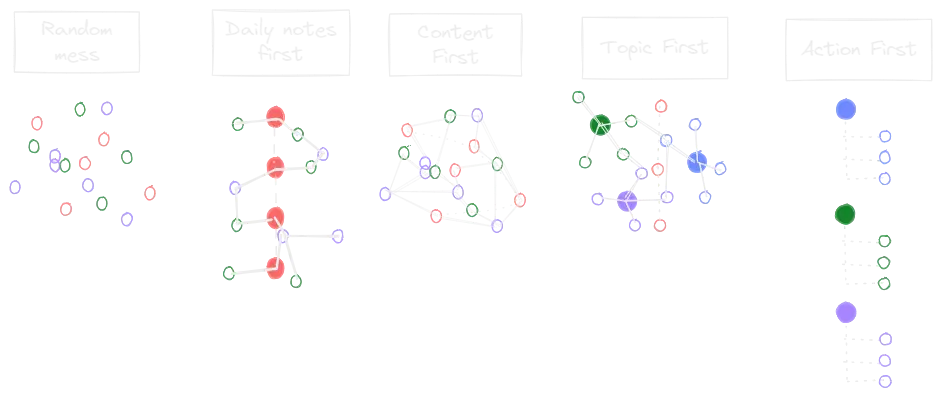methods of knowledge management
Notes
- Random mess - no order or structure, no system of connection. for example - a heap of post-it notes, emails, pages in a notebook, etc... you hope that by search you can find what you need
- Daily notes first - everything is recording in the daily note. for example - what i read/heard/learned that day, could include some branching out.
- Content first (atomic notes) - a new page for each new topic/idea/content. the key way of navigating in your vault is through the connection between the dots.
- Topic first - a separate page/MOC/Log for projects in your self, such as a project page, research topics, areas, hobbies... Zettelkasten 2bc is an example for such a system.
- Action/Context first - the structure is based on the context, i.e the primary use of each type of note. an example is the P.A.R.A method, which divides content into projects, actions, resources or archives.
Whichever structure we choose, it must "make sense", i.e that it will be easy for us to find what we are looking for. Use the concept of Caching to find the structure that supports best what you need.
Visual

Overview
🔼Topic:: PKM (MOC) Origin:: Zsolt's Visual Personal Knowledge Management 🔗Link:: Source